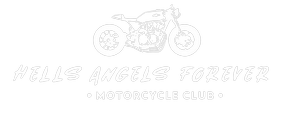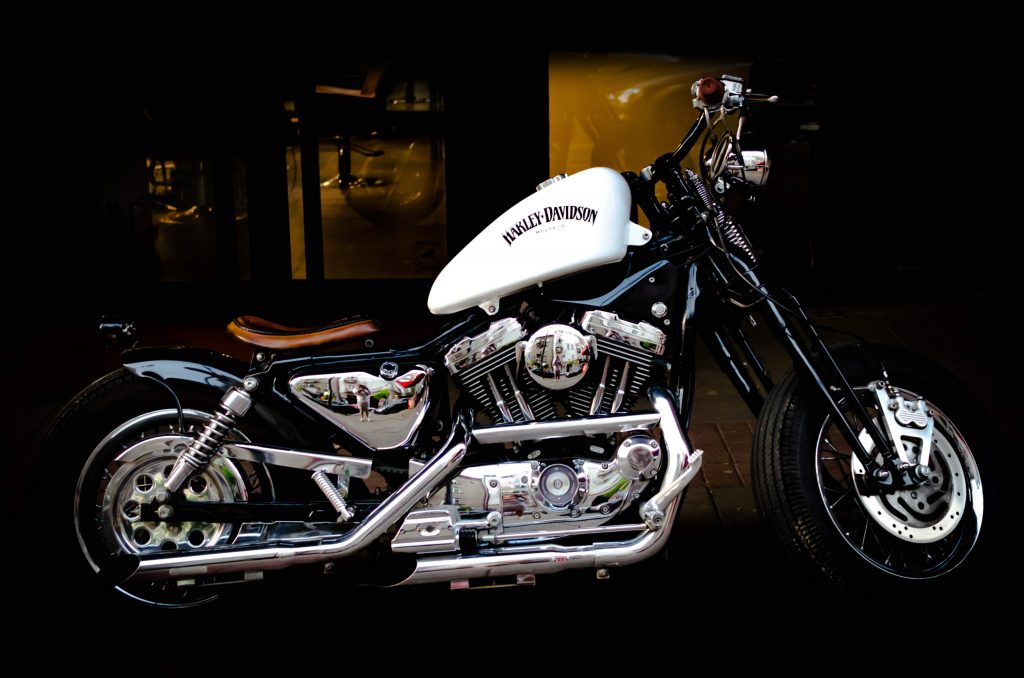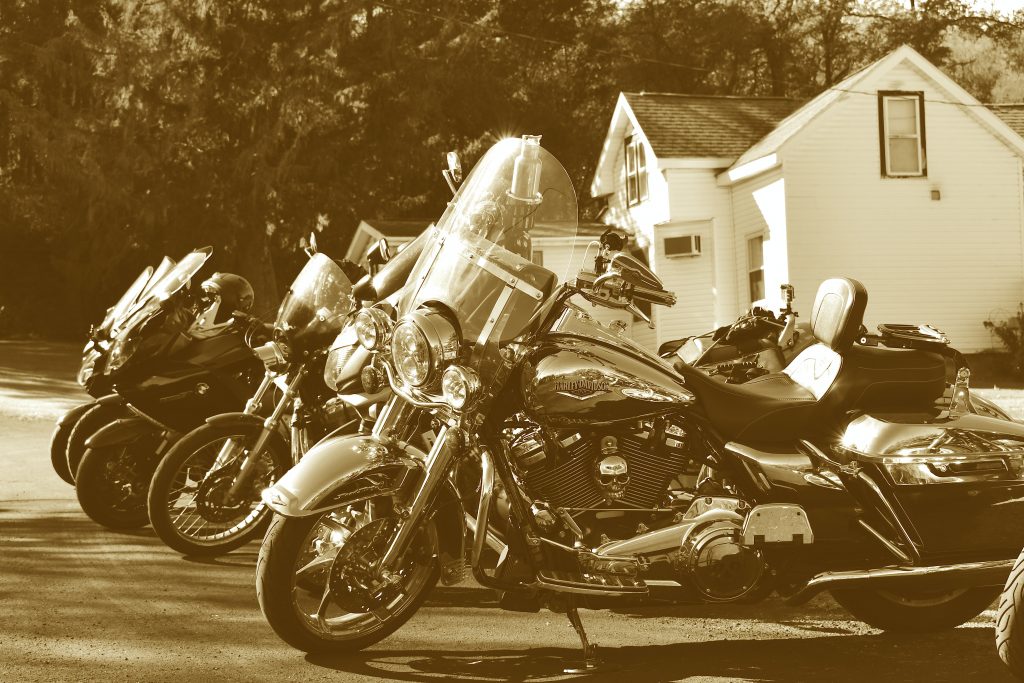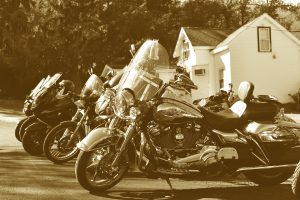Outlaws have retained an equivocal place in America’s popular imagination: we dread and despise the gangster’s hunger for violence; we desire and covet his wild independence. For a few weeks in early 1965, LIFE photographer Bill Ray and writer Joe Bride spent time with a group of Hells Angels that now serves as a live, brawling incarnation of our complicated connection with the rebel.
Here, along with a gallery of remarkable photographs that were shot for LIFE but never ran in the magazine, Ray and Bride recall their days and nights spent with Buzzard, Hambone, Big D and other Angels (as well as their equally tough “old ladies”) at a time when the roar of Harleys and the sight of long-haired bikers was still new and for the average, law-abiding citizen almost unfathomable. Most of the millions of readers of LIFE magazine had no idea what it was like to live like a headhunter in Borneo or a nomad in the Gobi Desert.
This was a new breed of rebel
“This was a new breed of rebel,” Ray told LIFE.com, recalling his time with the Angels. “They were unemployed. They totally detested everything that most Americans respect and strive for stability, security. When they weren’t riding their bikes or drinking for days on end in bars, they got into fights with anyone who crossed them. In their own world, they had their own set of laws and a code of conduct. It was an honor to be in her company.”
The Berdoo-Bakersfield run
Ray spent some of the time with the Angels on a ride from San Bernardino (approximately 40 miles east of Los Angeles) to Bakersfield, Calif., for a huge motorcycle event. The Berdoo-Bakersfield run is a trip of just approximately 130 miles but in 1965, it would offer enough moments (both calm and violent) for Ray to paint a rare, revealing portrait of the world’s most iconic motorcycle gang in its early days. The way in which the tale came about, meantime, was as dramatic and unexpected as Bill Ray’s images.
Writer Joe Bride remembers writing about Big Daddy Roth, “a genuine L.A. phenomenon and legend in the Southern California car scene,” and that he had written about him. He had a thriving company making hot rod-themed stickers and cartoon figures. The Angels were in the headlines as I was winding up my conversation with Big Daddy. As pot producers and distributors, they were accused of terrorizing a tiny village in central California. A lot of Angels, according to Big Daddy, were more like wandering nomads than actual criminals. By the way, after meeting them, my assessment of them was more in line with the general consensus than with Big Daddy’s.
‘I’d want to see the Angels and talk to them about creating a piece,’ Bride remarked. ‘I told Big Daddy Roth.’ This is a chance for them to earn some attention, and explain why they decided to go through with what they did. ‘They’ll meet you with conditions’ was Roth’s response to the Big Daddy article that appeared in late 1964. When the bride went to Big Daddy’s business, she ran into two Angels. Put him in the back of a car, blindfolded him, and drove him into the mountains. Angel, a stocky, long-haired Angel, asked Bride if he could play pool in a bar “with what appeared to be 100 bikes parked outside.” Bride won two of the three nine-ball games they played. Bride then negotiated with the Hells Angels at the bar, agreeing to let Bill Ray and him observe them. Afterward, they drove him back to Los Angeles while Bride had a few beers. They began reporting on the news a short time afterwards.
Blackboard Cafe in Bakersfield
While Ray recalls that they were with the Angels for more than a month in the spring of 1965, the Bakersfield run was “round-the-clock, three days and nights,” he recalls. I spent the night in the Blackboard Cafe in Bakersfield, which was the establishment where the Angels spent most of their time.
Ray claims today that he had a good relationship with the Angels. As I got to know them better, I began to like some of them a lot. As I accepted them for who they were, so did they. It’s true that, by their standards, I appeared to be somewhat comical.”
In that moment, Ray felt accepted by the Angels, or as accepted as he would ever be. At one point, Ray claims that “he got into a little trouble one day, in a pub” in a confrontation reminiscent of a famous scene from Hunter S. Thompson’s classic 1966 novel Hell’s Angels, where Thompson was nearly crushed to death by motorcyclists. I was snapping pictures when some motorcycles who weren’t Angels happened to pass by. As a type of mascot for the genuine strong guys, they didn’t realize that I didn’t like it. This was about a week into my time with the Angels. Suddenly, a Hells Angel standing next to me made it obvious that if a hair on my head was touched, the other person was going to be killed. For the first time in my relationship with those guys, I felt like I’d passed an exam, even if it was just a psychological one.
Even though the Angels Ray knew smoked cannabis and once “beat the heck out of some other motorcyclists at a bar,” he “never saw these men involved in anything genuinely criminal. On the other hand, they were never short on cash when it came to buying gas or a cold one. When they weren’t out partying, they rode their bikes everywhere. They all needed money, but none of them had ever worked a day in their lives.
Angels and other motorcycle groups are accused of extortion, drug trafficking, and other illegal acts by the FBI.
When it comes to the wide road, Ray says, “there’s a romance to it.” “It’s like the romanticism that people connect to cowboys and the West, which, of course, is entirely out of proportion to the reality of riding fences and punching cows,” he continues. There is, nevertheless, an undeniable allure to these Harley-Davidsons and their riders on the highway. A few years after I photographed the Angels, the film Easy Rider depicted the legend. Cowboys’ trails never end, while Angels’ highways are never-ending. They do nothing except ride. It doesn’t really matter where they’re headed. Even though it isn’t an easy life, they have chosen it. It is theirs. The rest of us, on the other hand, can either flee or perish.





